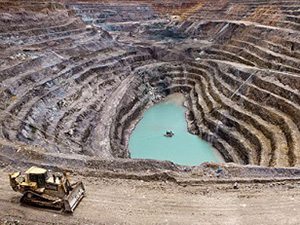
[miningmx.com] – ONE of the biggest challenges that investors in Zambia and the Democratic Republic of Congo (DRC) experience is the need for a concerted effort to engage local independent talent instead of outsourcing from South Africa or globally.
It’s difficult to find experienced environmental or social professionals resident in Zambia or the DRC with even five years’ experience in the mining sector.
For consultants and investors alike, this requires identifying and investing in local talent, which includes exposing local employees to international best practices and a commitment to mentoring, which makes a great deal of strategic long-term sense.
Many mining companies have adopted a “train the trainer’ approach to transfer global best practice, normally held by an expatriate, to local future industry leaders.
As is common throughout Africa, development and jobs are key. Within this political dimension government will often speed up the process by not enforcing its environmental regulations and allowing a project to go ahead.
This means that rather than fight the system, companies use the environmental impact assessment to help their clients identify and enhance benefits that go well beyond employment.
This ultimately changes the mindset that an EIA is only to obtain a licence to the realisation that it is an opportunity to enhance the sustainability of a project, addressing the economic, political and public desire for development while protecting the environment and local population.
Of course, most mainstream mining companies bring their own corporate standards and policies into play and tend to insist on more thorough EIAs than new entrants or developers.
The one redeeming factor is that the latter invariably require financing. With 70% of international project finance debt in emerging markets provided by signatories of the Equator Principles, alignment to international standards is critical.
Even with a regulatory compliant EIA many clients face the hurdle of the conditions precedent, no loan unless you conform to certain environmental, social, behavioural and working conditions. This extends even to Chinese banks, and it ultimately requires comprehensive environmental and social management systems.
As a result, the demand for international standard experienced, local environmental and social professionals is increased. Therefore, being able to sustain the industry through training and support locally becomes even more important for the future.
International investors will also find a big difference from the approach of regulators in the developed world.
In Europe and the US, for example, the regulator actually helps with the EIA and will offer guidelines to ensure you meet the regulatory requirements.
Africa typically doesn’t have the regulatory resources or the expertise, therefore the regulatory approval often falls far short of the international standards required for international financing of projects, which in turn, actually limits or delays development.
The copper region of Katanga, DRC and the North Western and Copperbelt provinces of Zambia comprise some of the largest copper mines in the world, with the region producing 1.8 million tonnes of finished copper in 2014.
With new projects in the pipeline, like First Quantum’s Trident and the Kansanshi smelter about to come online, Ivanhoe’s Kamoa and Kipushi projects as well as Freeport’s Tenke Fungurume and Glencore’s Mopani, Kamoto and Mutanda operations, the region will continue to be of importance for global copper supply for years to come.
The expansion of the industry in recent years has meant that local resources have not been able to keep up, a challenge which could restrict the future growth of the sector.











